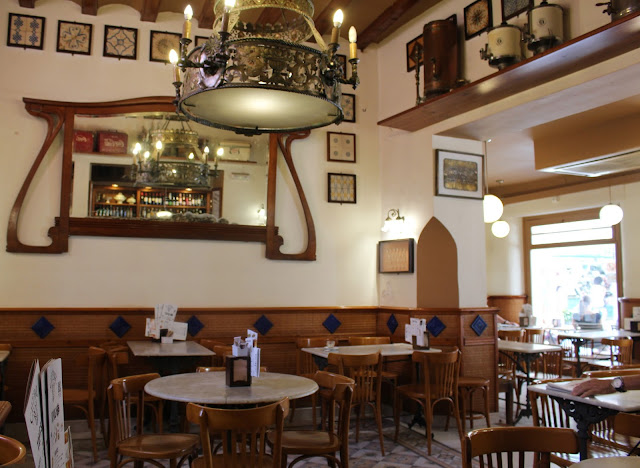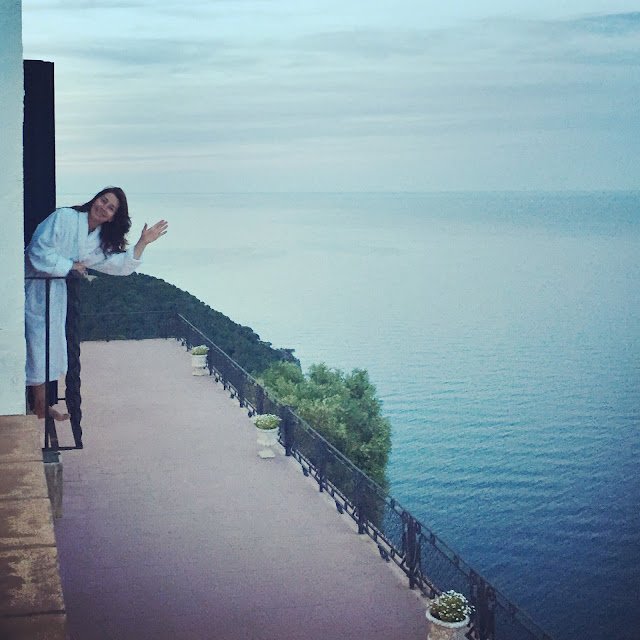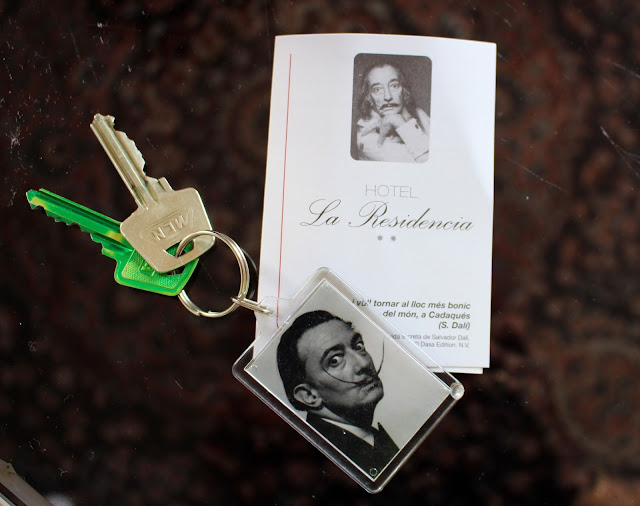Just 37km (23m) along the coast southwest of Barcelona, Sitges sizzles with beach life, nightclubs and an enviable clutch of festivals. It has been a resort town since the 19th century and was a key location for the Modernisme movement, which paved the way for the likes of Picasso. Despite its bacchanalian nightlife, Sitges remains a classy destination: its array of galleries and museums belie its small size and there's a good sprinkling of upmarket restaurants in its historic center. Its biggest draw however, remains its 17 beaches.
Cafe-Bar Roy is a good stop for a coffee or a glass of cava and snacks. This classic, old fashioned coffeehouse has marble tables, hand-painted tiles and Art Nouveau touches.
It doesn't take Sandi long to discover delicious Majorcan ensaimadas; fluffy pastry coils that are sometimes plain and sometimes filled with preserves or cream. They are enjoyed for breakfast or merienda (Spanish teatime), serving as the perfect mid-afternoon pick-me-up in anticipation of Spain's legendary late dinner hour. If you notice smudge marks on some of our photos they are from Sandi's sugar-dusted fingers on the lens.
An hour north of Barcelona is Girona, one of Spain's most historic cities. Its pristine Old Quarter is among the most beautiful is Spain.
The Eiffel Bridge over the Onyar River was designed by Eiffel in 1876.
Built on an old Roman settlement and steeped in the layered histories of the Romans, Moors and Jews, the town center is a compact jumble of narrow stone streets, dark alleyways, and the medieval arches of El Call—the ancient Jewish neighbourhood. Bustling by day, the cobblestone streets of the Old Quarter turn quiet as night falls. Though one of Spain's wealthiest cities, Girona has a reputation as a provincial and emphatically Catalan city.
Steep baroque stairs climb to Girona's imposing cathedral overlooking the city. On your mark, get set, go!
Girona was home to a prosperous Jewish community for more than 6 centuries, until its members were expelled in 1492. The Jewish district (“El Call” in Catalan) is a tangle of narrow, dark, atmospheric streets tucked within the Old Quarter and said to be the best-preserved ghetto in western Europe.
Rocambolesc is a Wonkaesque ice cream parlour ablaze with colour—even the pipes are painted in red and white, barley-sugar style. It offers up some of the best sorbet and ice cream you will taste anywhere.
L'Empordà, the plains and rolling green hills surrounding Girona, is Spain's Tuscany. Inland from the coast are small and mostly unassuming medieval villages, clusters of ancient stone houses—many converted into weekend and summer homes. The intoxicating smell of jasmine permeates the air.
The quiet village of Monells is an attractive enclave of medieval stonework. Monell's main claim to fame is its magnificent square.
The Costa Brava, the “untamed coast,” is a stretch of rocky coves and sandy beaches, with deep cobalt-blue Mediterranean waters, pine trees, and whitewashed fishing villages. Several of the most beautiful coves and sandy beach spots along the Costa Brava are near Palafrugell. There is good swimming and walking paths through pine-forested hills.
Calella de Palagrugell.
The courtyard of El Far Hotel.
A road-side view of the bays of Llafranc and Palafrugell.
The attractive town of Begur is topped by the ruins of a 13th century castle, with commanding 360-degree views of the whole of L'Empordà and the Costa Brava, all the way up the coast to Cadaqués.
Almost too pretty and perfect, the medieval town of Pals rising above the plains is hugely popular with tourists. Pal's alleyways and stone walls look as though they could be part of a movie set.
Cadaqués gleams above the cobalt-blue waters of a rocky bay on Catalonia's most easterly outcrop. This whitewashed village owes its allure in part to its windswept pebble beaches and meandering lanes, and the easy-going atmosphere that draws throngs of summer visitors.
But it's the artist Salvador Dalí who truly gave Cadaqués sparkle. The artist spent family holidays here during his youth, and lived much of his later life at nearby Portlligat. Thanks to Dalí and other luminaries, Cadaqués pulled in a celebrity crowd and still does. Look for the two silver heads atop Dalí's house.
Portlligat, the neighbouring village to Cadaqués is connected by a stone-walled trail lined with cacti and olive groves. It's centerpiece is Casa Salvador Dalí, the labyrinthine seafront house where the artist lived and worked for five decades. Along with the silver heads, his signature eggs balance precariously atop the roof.
“Hola Senior Dalí.”

We join the queues outside Es Fornet bakery to buy burilles, a thin aniseed-flavoured, nut- and sugar-sprinkled biscuit that's a local delicacy.
Hotel La Residencia where we're staying is a lovely mansion from 1904 with attractive and surreal Dalí-themed rooms, many with balconies and sea views. Picasso lodged here in 1910 and The Lovells in 2016.

Our large suite is the size of an apartment.
The staircase to the bedroom is cleverly hidden in a column topped by a bust of surrealist skier Timothy Lovell.
Sandi channels her inner Salvador Dalí.
Dinner tonight is at Es Baluard, a family-run harbourside hotspot since 1967, serving its own take on Mediterranean seafood favourites: hence, spider crab with rice (Sandi's pick, regrettably).
The ornate, gilded wood alter of Santa Maria church located at the highest point of the Old Town.
Giant shells hold the “holy” water.
The Empordà region is marked by the trail of Spain's famous oddball, surrealist artist Salvador Dalí who hailed from northern Catalunya and lived much of his life on the Costa Brava. Three points including a museum and two curious homes, form the Dalí Triangle. Together they are a must-see for anyone with an appreciation for Dalí and the absurd. That's us so we're here in Figueres at Dali's Teatre Museu.

Dalí designed his museum-theatre as his legacy in his birthplace of Figueres. It is part theatre, part amusement park—fittingly idiosyncratic and witty. Dalí is buried in a crypt here. The red building is topped by giant white eggs and decorated with glazed ceramic loaves of bread. Dalí's motifs were symbolic with deep meaning. For example, the eggs symbolize the resurrection of Christ and are the emblem of purity and perfection.
Dalí's bed.
The painted ceiling in his bedroom.
The famous Mae West salon with furniture resembling her face. The lips are a sofa.
Self portrait cutting his wife, Gala's hair.
Not sure what this doorway symbolizes—okay, maybe the guy was a little weird.
Weird or not, he had boundless imagination and creativity and didn't hold back expressing it. His opulent jewelry designs are exhibited in the museum next door.
Back outside on the streets of Figueres, with jewelry on the brain, Sandi discovers where Hermès found inspiration for their iconic necklace and bracelet design.


































































2 comments:
Spent more than an hour skipping through your wonderful photos. I had a bit of a holiday myself in 1995. Maybe I'll get another one some day... Stay lucky.
Gordon
We're glad you enjoyed our photos Gordon. It sounds like you're overdue for a holiday or at least a brief 'staycation'. Seize the day!
Post a Comment